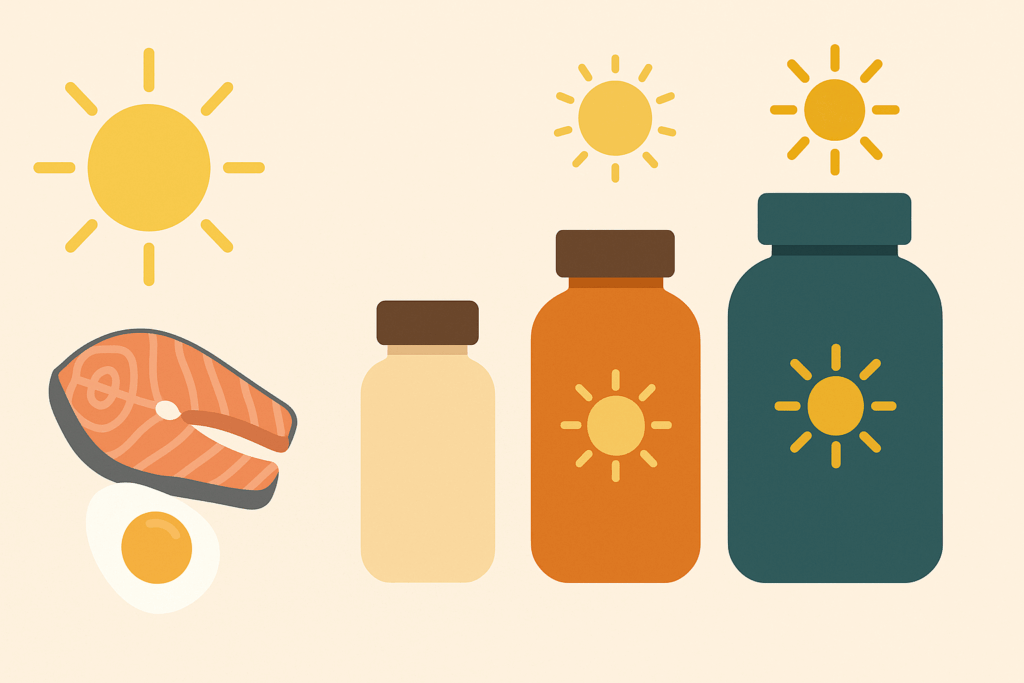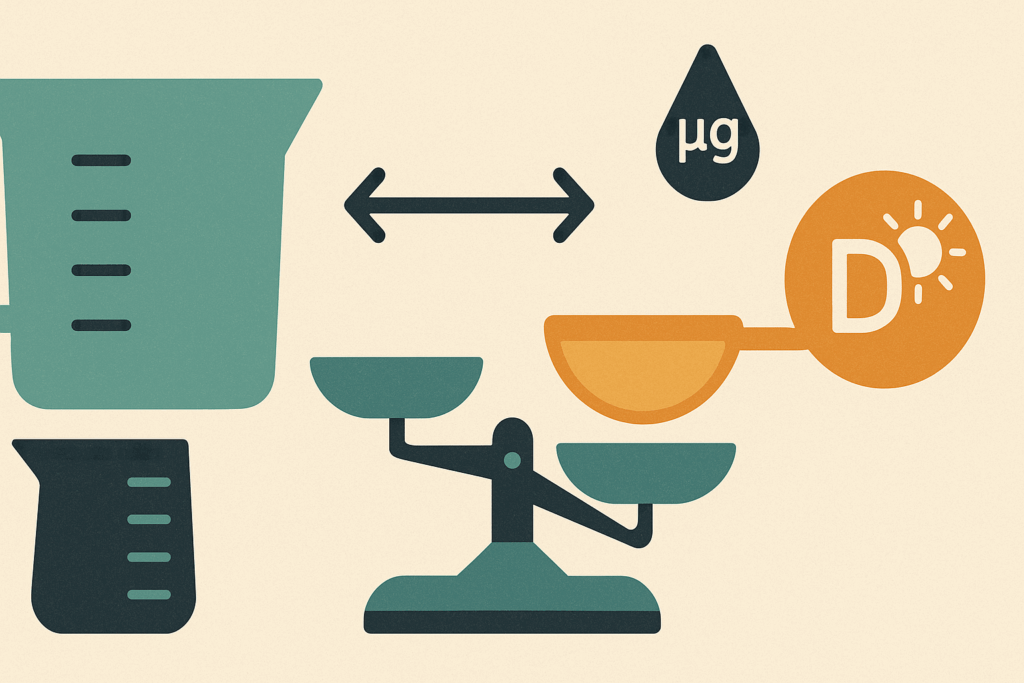In recent years, awareness surrounding the significance of vitamin D has grown considerably, especially in the context of daily supplementation and dietary balance. Among the many forms of this vital nutrient, vitamin D3 1000 international units stands out as a commonly recommended dosage that reflects both safety and efficacy for a wide range of individuals. Whether derived from fortified foods, sunlight, or supplements, vitamin D3 plays an essential role in regulating calcium metabolism, supporting immune function, and promoting overall wellbeing. For many people who do not receive sufficient sun exposure or who have dietary restrictions, incorporating vitamin D3 into a consistent nutritional strategy is not just advisable—it is critical. This article will explore in depth the multifaceted benefits, scientific underpinnings, and practical applications of taking vitamin D3 1000 international units as part of a balanced diet and thoughtful supplement plan, with particular attention to variations by age, gender, and lifestyle.
You may also like: 12 Foods You Should Eat Every Day for Powerful Nutritional Benefits

Understanding the Biological Importance of Vitamin D3
Vitamin D3, or cholecalciferol, is a fat-soluble vitamin that the body can synthesize when the skin is exposed to ultraviolet B (UVB) rays from the sun. It is also available through dietary sources and supplementation. Unlike many other vitamins, vitamin D functions more like a hormone within the body. Once ingested or synthesized, it undergoes hydroxylation in the liver and kidneys to become the biologically active form, calcitriol, which then binds to vitamin D receptors throughout various tissues.
This active form of vitamin D3 is crucial in maintaining calcium and phosphate balance, both of which are fundamental to bone formation and maintenance. In the absence of sufficient vitamin D, the body struggles to absorb calcium from the diet, resulting in bone demineralization, increased fracture risk, and conditions such as rickets in children and osteomalacia in adults. Moreover, recent studies have revealed vitamin D’s involvement in modulating immune responses, influencing gene expression, and potentially reducing the risk of autoimmune conditions and certain cancers. These findings emphasize the need for appropriate daily intake, especially in populations with limited sun exposure or dietary insufficiencies.

Why Vitamin D3 1000 International Units is a Popular Daily Dosage
The recommendation to take vitamin D3 1000 international units daily is grounded in a growing body of research that identifies this amount as both effective and safe for most healthy adults. While some individuals may require higher doses based on age, body weight, or medical conditions, 1000 IU is widely considered a foundational baseline that helps maintain adequate serum levels of 25-hydroxyvitamin D, the biomarker used to assess vitamin D status.
This specific dosage is often included in over-the-counter multivitamins, standalone vitamin D supplements, and fortified foods. It serves as a middle ground: not so low as to be ineffective, yet not high enough to risk toxicity in individuals with no known deficiencies. Importantly, vitamin D3 (cholecalciferol) has been shown to be more potent and longer-lasting than D2 (ergocalciferol), further supporting the choice of D3 over other forms.
Many health organizations, including the Endocrine Society and the Institute of Medicine, acknowledge that although the minimal requirement for avoiding bone disease may be as low as 600 IU, higher intakes such as 1000 IU per day are more suitable for maintaining optimal health. This is especially true during winter months or in geographic regions where sun exposure is inadequate.

Evaluating the Best D3 Supplement for Optimal Absorption and Efficacy
Choosing the best d3 supplement involves more than just examining the IU count. Factors such as bioavailability, delivery format, and additional ingredients can significantly influence how effectively the supplement raises serum vitamin D levels. For instance, vitamin D3 is fat-soluble, which means it is best absorbed when taken with dietary fat. Therefore, softgel capsules suspended in oil, such as olive or coconut oil, tend to offer superior absorption compared to dry tablets or gummies.
Another consideration is whether the supplement is third-party tested for purity and potency. Reputable brands provide certificates of analysis (COAs) to ensure their products meet high standards and contain the exact dosage stated on the label. This is particularly important given the variability observed in over-the-counter supplements.
Additionally, the presence of co-nutrients like vitamin K2 can be beneficial. Vitamin K2 helps direct calcium to the bones and away from the arteries, reducing the risk of arterial calcification. While not required in all cases, a combination supplement containing both D3 and K2 may be ideal for individuals looking to support bone and cardiovascular health simultaneously.

The Synergistic Role of Vitamin D in Women’s Health
Vitamin D plays a pivotal role in women’s health, especially during life stages that demand increased nutrient support, such as pregnancy, lactation, and menopause. The best vitamin d for women is often one that considers these unique physiological needs and delivers not only the correct dosage but also complementary nutrients like calcium and magnesium.
Women are particularly susceptible to vitamin D deficiency due to hormonal fluctuations that influence bone density. Post-menopausal women, for example, experience a drop in estrogen levels, which can accelerate bone loss and increase the risk of osteoporosis. Supplementing with vitamin d3 1000 international units can help mitigate this risk by supporting calcium absorption and bone integrity.
Pregnant and breastfeeding women also benefit significantly from adequate vitamin D intake, as it supports fetal bone development and may help prevent complications such as preeclampsia and gestational diabetes. For this demographic, the best vitamin d supplement for women may be one that includes iron, folic acid, and other prenatal nutrients in a balanced formulation.
Energy, Mood, and Immunity: Beyond Bones
While the classical role of vitamin D centers on bone health, emerging research has broadened our understanding of its systemic effects. One frequently asked question is, “does vitamin d give you energy?” Although vitamin D is not a stimulant in the traditional sense, its role in mitochondrial function and cellular energy metabolism suggests that adequate levels may indeed support sustained energy and reduced fatigue.
Vitamin D receptors are present in brain tissue, and their activation has been linked to the synthesis of neurotransmitters like serotonin and dopamine. Consequently, vitamin D deficiency has been associated with symptoms of depression, seasonal affective disorder (SAD), and general mood disturbances. Supplementing with vitamin D3 can improve mood and psychological resilience, particularly during months with limited sunlight.
The immune-modulating properties of vitamin D also deserve attention. Studies have demonstrated that individuals with sufficient vitamin D levels are less likely to experience upper respiratory tract infections. Furthermore, during global health events such as the COVID-19 pandemic, vitamin D’s potential role in reducing infection severity became a subject of intense investigation, leading many health professionals to recommend daily supplementation.
Understanding How Much Vitamin D3 Per Day Is Optimal for You
Navigating the landscape of dosage recommendations can be confusing, especially with questions like “how much d3 should I take” or “how much vitamin d should I take” circulating in health communities. The answer is multifaceted, depending on individual factors such as age, weight, skin color, latitude, lifestyle, and existing health conditions.
For most healthy adults, taking vitamin d3 1000 international units daily is a prudent starting point. However, individuals with diagnosed deficiencies may require higher doses such as 2000 IU, 4000 iu vitamin d, or even more under medical supervision. The key is to tailor the dosage based on serum 25(OH)D levels, which can be assessed through a simple blood test.
It is also important to address gender-specific questions like “how much vitamin d3 per day for a woman” or “how much vitamin d3 should I take daily” to reflect biological differences in bone density, hormonal profiles, and pregnancy-related needs. While the baseline for women is often similar to men, specific life stages may necessitate adjustments in dosage.

Dietary Sources: What Foods Have D3 and Other Forms of Vitamin D
Although supplementation is an effective strategy for achieving optimal vitamin D levels, dietary sources remain important for individuals aiming to maintain a natural, food-based approach. Understanding what contains vitamin d and what foods have d3 can help enrich the diet with this essential nutrient.
Fatty fish such as salmon, mackerel, and sardines are among the richest natural sources of vitamin D3. Cod liver oil is another potent source, though its strong flavor can be a barrier for some. Fortified foods, including milk, orange juice, and breakfast cereals, provide an accessible means of boosting intake, especially in populations with limited access to fresh seafood.
It is also helpful to explore lesser-known options like mushrooms exposed to UV light, which contain vitamin D2. While not as potent as D3, these can still contribute to overall intake. Questions like “what fruit has vitamin d” are common, but the reality is that fruits are generally poor sources of this nutrient, making supplementation or fortification necessary.
Timing and Consistency: When to Take Vitamin D for Maximum Benefit
Establishing a routine is crucial for maximizing the benefits of vitamin D supplementation. Many individuals ask, “when is it best to take vitamin d” or “when to take vitamin d for best results?” The answer depends on the form of supplement and the individual’s daily schedule.
Because vitamin D is fat-soluble, it should ideally be taken with meals that contain dietary fats to enhance absorption. Morning or midday dosing may be preferable for those who find that taking supplements later in the day disrupts their sleep. Conversely, individuals who pair their supplements with a nightly meal may find evening dosing more convenient and sustainable.
What matters most is consistency. Whether you choose to take your supplement in the morning or at night, doing so regularly ensures stable serum levels. Pairing vitamin D with another routine task, such as brushing your teeth or preparing coffee, can help build the habit and prevent missed doses.

Clarifying the Confusion: IU 1000 Vitamin D vs. Vitamin D 1000UI and More
The terminology used on supplement labels can be confusing, particularly when encountering variations such as iu 1000 vitamin d or vitamin d 1000ui. While these terms may appear different, they refer to the same dosage expressed in international units (IU), which is a standardized measure used globally to denote vitamin potency.
Understanding how much is d or how much vitamin d per day is safe requires familiarity with these units. For vitamin D, 1 IU is equal to 0.025 micrograms. Therefore, 1000 IU equals 25 micrograms. The safe upper intake level for most adults is around 4000 IU daily, though some medical conditions may justify higher intakes under supervision.
The vitamin d deficiency dosage chart provided by health authorities offers guidance on how to correct low serum levels. For example, individuals with severe deficiency may be prescribed 50,000 IU weekly for several weeks before transitioning to a maintenance dose such as 1000 or 2000 IU daily. These protocols underscore the need for individualized plans based on clinical data rather than guesswork.
Vitamin D Drinks, Fortified Foods, and OTC Options
For those who prefer alternatives to pills, a growing array of vitamin d drinks and functional beverages offer convenient options. These include fortified plant-based milks, meal replacement shakes, and enhanced waters. While these products can contribute to overall intake, it is important to read labels carefully and ensure that the D3 content meets your needs.
Vitamin d otc (over-the-counter) options are widely available in pharmacies, grocery stores, and online retailers. They range from low-dose chewables to high-potency softgels. The best d3 supplement for an individual may vary based on dietary preferences, allergies, or digestive issues. For example, someone with a dairy allergy may prefer a vegan capsule derived from lichen, while another person may prioritize a liquid formulation for faster absorption.
Frequently Asked Questions About Vitamin D and Supplementation
How does vitamin D3 1000 international units support long-term immune resilience in adults?
Vitamin D3 1000 international units contributes to long-term immune resilience by modulating both innate and adaptive immune responses. Unlike short-term immune boosters, consistent intake of vitamin D3 strengthens the production and efficiency of antimicrobial peptides in mucosal barriers, which are your body’s first line of defense. Over time, this modulation also helps regulate inflammatory cytokines, lowering the risk of chronic inflammation that can compromise immune health. Clinical studies have shown that maintaining adequate vitamin D levels may decrease the incidence and severity of autoimmune conditions, particularly in populations living in northern latitudes with limited sunlight. Moreover, adults with adequate vitamin D intake often report fewer occurrences of upper respiratory infections during winter months, highlighting its preventative role in seasonal immunity.
What is the difference between 4000 IU vitamin D and vitamin D3 1000 international units in terms of use cases?
The difference between 4000 IU vitamin D and vitamin D3 1000 international units often lies in their intended use and duration. While 1000 IU is widely recognized as a safe and effective maintenance dose for most healthy adults, 4000 IU may be recommended for individuals with a diagnosed deficiency, low baseline serum levels, or chronic health conditions that interfere with absorption. For example, people with gastrointestinal disorders like Crohn’s disease or celiac disease may require the higher dosage under medical supervision. However, sustained use of 4000 IU should only occur after a healthcare provider confirms the need through a vitamin D deficiency dosage chart or lab testing. In contrast, 1000 IU is generally considered a daily dose that supports ongoing wellness without requiring frequent monitoring.
What practical strategies can help people absorb vitamin D3 more effectively from food and supplements?
To maximize the absorption of vitamin D3, consider pairing supplements or foods high in vitamin D with healthy fats such as avocado, olive oil, or nuts. Since vitamin D is fat-soluble, its uptake improves significantly in the presence of dietary lipids. Meal timing also matters—taking vitamin D3 with your largest meal of the day may enhance serum concentrations by up to 50%. Emerging research also suggests that gut health plays a role in how well you absorb fat-soluble vitamins, so maintaining a diverse gut microbiome may indirectly improve vitamin D3 bioavailability. Finally, some of the best d3 supplement formats include emulsified drops or oil-based capsules, which offer better absorption for individuals with digestive sensitivities or fat malabsorption syndromes.
Can the best vitamin D for women change depending on age or hormonal changes?
Yes, the best vitamin D for women can change significantly across life stages due to shifting hormonal profiles and metabolic demands. For younger women, particularly those in their reproductive years, maintaining optimal vitamin D supports fertility and menstrual regularity by influencing hormone synthesis. During pregnancy and lactation, requirements increase, making it vital to ask “how much vitamin d3 per day for a woman” and potentially adjust the dosage to meet increased needs. Postmenopausal women face a higher risk of osteoporosis due to declining estrogen, making vitamin D essential for calcium regulation and bone strength. In these cases, the best vitamin d supplement for women may also include calcium, magnesium, and vitamin K2 to enhance skeletal health. Choosing the right formulation—such as time-release capsules or combination formulas—should be based on both age and personal health history.
How does vitamin D intake interact with energy levels and cognitive clarity?
Many people wonder, “does vitamin d give you energy?”—and while it’s not a stimulant, its impact on mitochondrial function suggests a potential role in reducing fatigue. Mitochondria rely on vitamin D for optimal energy metabolism, and deficiency has been linked with chronic tiredness and low endurance. Moreover, vitamin D supports neurotransmitter production, including serotonin and dopamine, which contribute to motivation, mental alertness, and overall vitality. A well-balanced routine that includes vitamin D3 1000 international units may thus help improve focus and reduce cognitive fog, especially in individuals working long hours or experiencing seasonal mood dips. Over time, regular intake may subtly yet steadily contribute to a more energized and resilient baseline state.
Exploring Dietary Sources: What foods have d3 and how can they be integrated into meals?
When considering what foods have d3, fatty fish such as salmon, sardines, and tuna top the list, along with fortified options like milk, eggs, and certain breakfast cereals. These foods offer an accessible alternative to supplementation for those who prefer dietary solutions. Creative meal planning can help increase daily intake: for instance, using sardines in salads or adding fortified oat milk to smoothies enhances vitamin D levels naturally. While most fruits don’t contain vitamin D, pairing them with d-rich foods—like berries atop fortified yogurt—can create a balanced snack. For individuals seeking plant-based sources, mushrooms exposed to UV light offer a vegetarian form of vitamin D2, which, though slightly less potent than D3, still contributes to overall intake.
Optimizing Routine: When is it best to take vitamin d for consistent benefits?
A common question is “when to take vitamin d” for the most consistent benefits, and the answer often depends on lifestyle and absorption patterns. Since vitamin D is fat-soluble, taking it with a meal that includes healthy fats—often lunch or dinner—is ideal. However, some individuals find morning dosing preferable, especially if they associate afternoon or evening intake with sleep disturbances, although research is inconclusive on this effect. Consistency is key: aligning vitamin D intake with a daily routine—like breakfast or the first coffee—helps build long-term adherence. Additionally, syncing your intake with other fat-soluble nutrients like omega-3s or vitamin A may enhance absorption synergy.
How do vitamin D drinks and OTC options compare to traditional supplements?
Vitamin d drinks and over-the-counter (vitamin d otc) products have become increasingly popular, offering convenient ways to meet daily needs without swallowing pills. These drinks often include other nutrients such as B vitamins, calcium, or electrolytes, appealing to individuals with active lifestyles. However, the actual dosage of vitamin D in these beverages can vary widely, making it essential to check labels to ensure you’re getting at least vitamin d3 1000 international units if using it as a primary source. While some drinks provide a full daily dose, others contribute only a small percentage, requiring supplementation from additional sources. Over-the-counter options in capsule, gummy, or spray form tend to offer more precise dosages and are ideal for people seeking standardized intake.
Why is there confusion between terms like iu 1000 vitamin d, vitamin d 1000ui, and how much is d?
The confusion around phrases like iu 1000 vitamin d or vitamin d 1000ui often stems from inconsistent labeling across international markets. “IU” stands for international units, a standardized metric used to quantify vitamin potency, particularly for fat-soluble vitamins. One IU of vitamin D equals 0.025 micrograms, so 1000 IU equates to 25 micrograms. When people ask “how much is d,” they may be inquiring about daily requirements, which vary based on factors like age, weight, and medical conditions. These ambiguities can be resolved by reviewing dosage charts or consulting healthcare providers, especially when adjusting intake based on the vitamin d deficiency dosage chart used in clinical guidelines.
Incorporating vitamin d3 1000 international units into lifestyle plans for men and women
The practical integration of vitamin d3 1000 international units into everyday routines differs slightly for men and women due to physiological and hormonal distinctions. For men, vitamin D supports testosterone synthesis, muscle function, and cardiovascular health, making it a key nutrient for athletic performance and longevity. When evaluating vitamin d for men, factors such as age, body fat percentage, and lifestyle should guide dosage decisions. Women, particularly those of childbearing age or in menopause, benefit from formulations that also address calcium metabolism and mood regulation. Choosing the best d3 supplement should take into account not just gender, but also dietary preferences and health status. By tailoring intake with respect to life stage, diet, and physical activity, individuals can maximize the protective and restorative benefits of daily vitamin D supplementation.
Conclusion: Integrating Vitamin D3 1000 International Units into Your Long-Term Wellness Strategy
Vitamin D3 is no longer viewed solely as a nutrient for bone health. Its far-reaching effects on mood, immunity, and chronic disease prevention make it a cornerstone of modern wellness strategies. Incorporating vitamin d3 1000 international units into your daily routine offers a practical, evidence-based approach to maintaining optimal health without the risk of excessive dosing. From selecting the best vitamin d supplement for women or men to exploring the question of “will vitamin d give you energy,” the answers all converge on the central theme of balance and consistency.
By choosing the best d3 supplement for your lifestyle, timing its intake for maximum benefit, and complementing it with foods high in vitamin d, you can create a sustainable routine that supports long-term vitality. As always, working with a healthcare provider to determine how much vitamin d3 should I take daily ensures your approach is tailored to your unique physiological needs. Whether you’re just starting your journey with vitamin d or looking to optimize your current plan, embracing vitamin D3 1000 international units as part of a comprehensive diet and supplement regimen is both a smart and essential step forward.
Further Reading:
Taking too much vitamin D can cloud its benefits and create health risks



